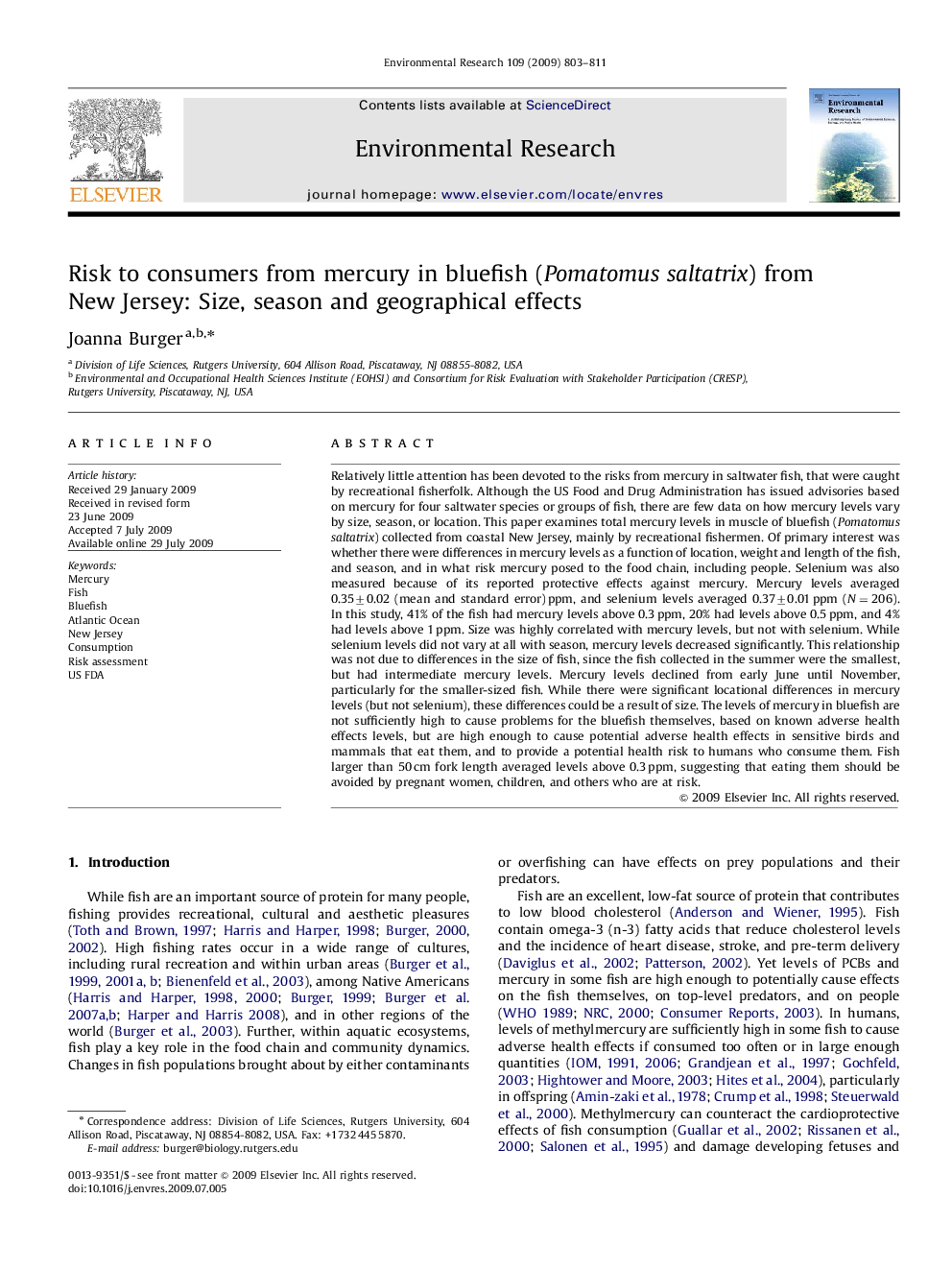| کد مقاله | کد نشریه | سال انتشار | مقاله انگلیسی | نسخه تمام متن |
|---|---|---|---|---|
| 4470366 | 1314422 | 2009 | 9 صفحه PDF | دانلود رایگان |

Relatively little attention has been devoted to the risks from mercury in saltwater fish, that were caught by recreational fisherfolk. Although the US Food and Drug Administration has issued advisories based on mercury for four saltwater species or groups of fish, there are few data on how mercury levels vary by size, season, or location. This paper examines total mercury levels in muscle of bluefish (Pomatomus saltatrix) collected from coastal New Jersey, mainly by recreational fishermen. Of primary interest was whether there were differences in mercury levels as a function of location, weight and length of the fish, and season, and in what risk mercury posed to the food chain, including people. Selenium was also measured because of its reported protective effects against mercury. Mercury levels averaged 0.35±0.02 (mean and standard error) ppm, and selenium levels averaged 0.37±0.01 ppm (N=206). In this study, 41% of the fish had mercury levels above 0.3 ppm, 20% had levels above 0.5 ppm, and 4% had levels above 1 ppm. Size was highly correlated with mercury levels, but not with selenium. While selenium levels did not vary at all with season, mercury levels decreased significantly. This relationship was not due to differences in the size of fish, since the fish collected in the summer were the smallest, but had intermediate mercury levels. Mercury levels declined from early June until November, particularly for the smaller-sized fish. While there were significant locational differences in mercury levels (but not selenium), these differences could be a result of size. The levels of mercury in bluefish are not sufficiently high to cause problems for the bluefish themselves, based on known adverse health effects levels, but are high enough to cause potential adverse health effects in sensitive birds and mammals that eat them, and to provide a potential health risk to humans who consume them. Fish larger than 50 cm fork length averaged levels above 0.3 ppm, suggesting that eating them should be avoided by pregnant women, children, and others who are at risk.
Journal: Environmental Research - Volume 109, Issue 7, October 2009, Pages 803–811